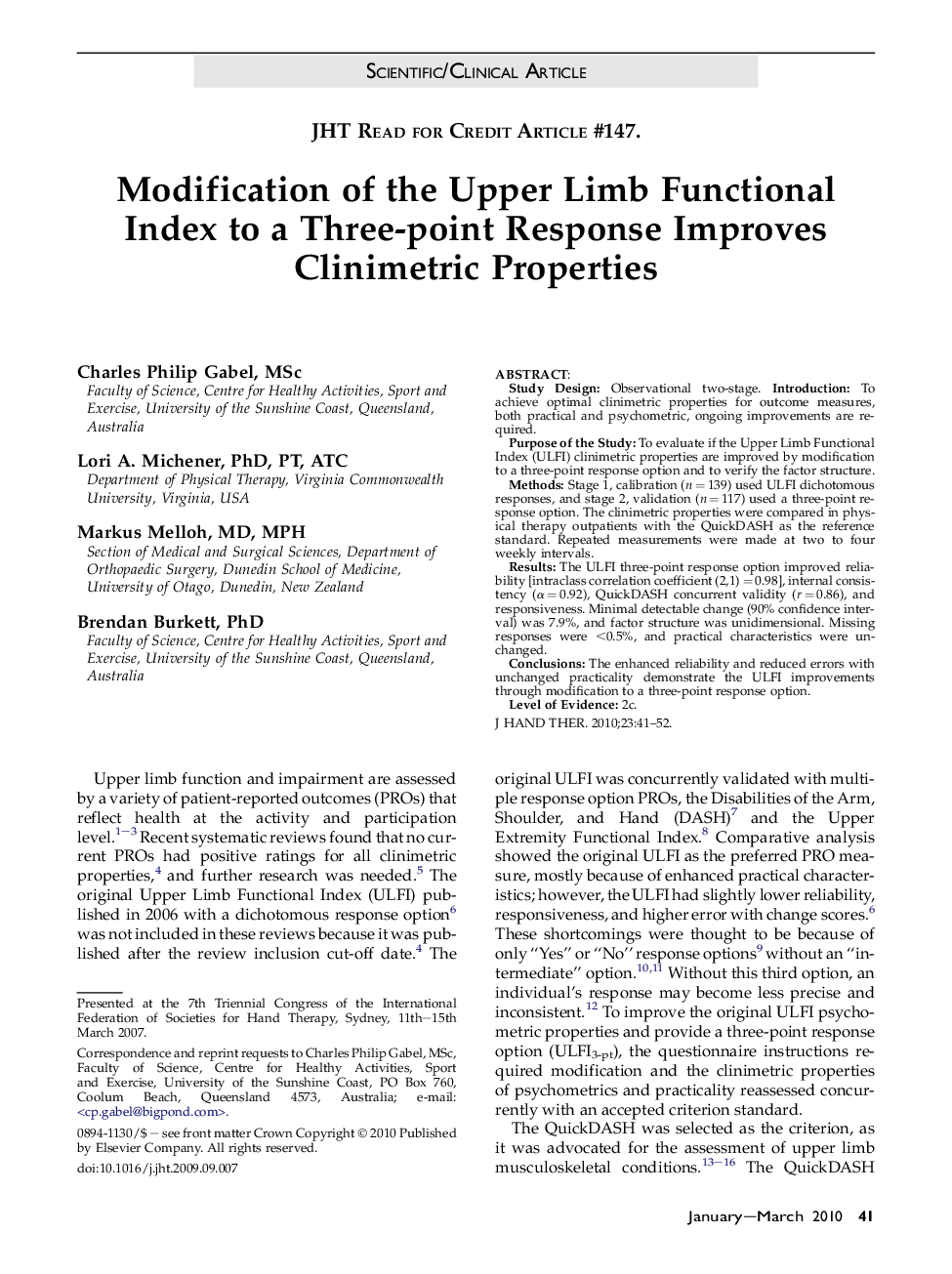| Article ID | Journal | Published Year | Pages | File Type |
|---|---|---|---|---|
| 2692322 | Journal of Hand Therapy | 2010 | 12 Pages |
Study DesignObservational two-stage.IntroductionTo achieve optimal clinimetric properties for outcome measures, both practical and psychometric, ongoing improvements are required.Purpose of the StudyTo evaluate if the Upper Limb Functional Index (ULFI) clinimetric properties are improved by modification to a three-point response option and to verify the factor structure.MethodsStage 1, calibration (n = 139) used ULFI dichotomous responses, and stage 2, validation (n = 117) used a three-point response option. The clinimetric properties were compared in physical therapy outpatients with the QuickDASH as the reference standard. Repeated measurements were made at two to four weekly intervals.ResultsThe ULFI three-point response option improved reliability [intraclass correlation coefficient (2,1) = 0.98], internal consistency (α = 0.92), QuickDASH concurrent validity (r = 0.86), and responsiveness. Minimal detectable change (90% confidence interval) was 7.9%, and factor structure was unidimensional. Missing responses were <0.5%, and practical characteristics were unchanged.ConclusionsThe enhanced reliability and reduced errors with unchanged practicality demonstrate the ULFI improvements through modification to a three-point response option.Level of Evidence2c.
